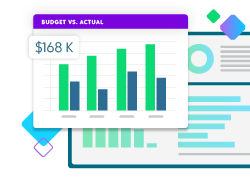Beyond the Audit: 6 Best Practices to Build and Strengthen Your Relationship with Your Audit Firm

In recent years, relationships between nonprofit organizations and their auditors have seen positive change. Auditors are viewed less by nonprofits as once-a-year visitors and more as year-round trusted advisors.
Your auditor’s year-end work will remain critical to ensure the financial integrity of your nonprofit’s books and records and compliance with ever-changing regulations. Audit firms have now, however, transitioned to long-term partners, particularly for nonprofits contemplating transformative system or operational changes.
The Audit Relationship: Then and Now
Change management has not historically been an area where nonprofits consulted their auditor. Nonprofits would sometimes modify or overhaul their systems and controls without engaging their auditors. Audit teams would then be caught off guard, unaware of either newly implemented accounting systems, new chart of accounts, or changes in processes and management roles. Because the teams were not prepared at the year-end audit for these types of significant changes, there were often issues that required auditors to spend additional time in discussions with management or to document their understanding of the changes.
Six Best Practices for a Stronger Audit Relationship
Now, however, nonprofits and auditing firms are more likely to share and leverage their diverse experiences to better collaborate with one another. Here are six best practices your nonprofit organization should adopt to increase collaboration and enhance its relationship with your audit firm.
1. Set and Understand Expectations
At the outset, both your nonprofit organization and audit team should agree on the scope, objectives and timeline of the audit process and who is responsible for each task. By setting expectations early, your organization and audit team can both adequately prepare for, address and streamline not just the audit process, but also any issue or question that may arise during the year.
These questions could be centered around a large contribution that the organization received that they were not expecting, and if the organization is properly recording it. Maybe the organization needs additional help understanding new accounting guidance that is effective and the impacts on its financial records. Or possibly the organization is updating their internal controls and wants to make sure their changes are sufficient and reasonable.
I encountered a situation where a nonprofit organization would continuously record the contributions it received incorrectly. To alleviate the need for adjusting entries during the audit, we devised a plan to work with the finance and development departments of the organization whenever a substantial contribution was received to ensure it was recorded appropriately in the organization’s general ledger. After a handful of discussions, the organization understood the mistakes and were able to properly record the contributions without our assistance. It’s important that the nonprofit and audit team have these discussions throughout the year so there are no surprises during the audit.
2. Create Clear Channels of Communication
Effective communication is the foundation of any successful relationship. Your nonprofit should establish clear channels of communication with its audit team before the audit starts.
With most audit work being performed remotely or with a hybrid schedule, clear communication takes on greater importance. As audit teams combine onsite with remote visits when performing audits, your organization should hold routine status meetings and have open lines for discussion and questions.
Clear and frequent communication channels will help ensure that your audit is progressing smoothly. Many nonprofits have shifted to regular quarterly check-ins with their auditor, sometimes even monthly. This has allowed for smoother and more efficient audits.
One nonprofit we worked with was struggling to meet its financial reporting deadlines and its audit would unfortunately lag behind the agreed upon timelines. The executive director and audit partner discussed what could be done to improve the process. They implemented weekly check-ins during the audit so both teams could discuss and collaborate on how to achieve the common goal of completing the audit. This new form of communication between organization and audit firm allowed for the audit to be completed within the agreed upon timeframe for the first time in years and has only become more efficient through the years.
3. Proactively Engage
Auditors are now more involved in discussions with management regarding system revisions, technology upgrades, or significant organizational changes. Proactively engaging with your auditor on these matters can provide constructive input on potential implications, risks, and necessary adjustments that might not have been considered otherwise. Being proactive can also lead to strengthening controls identified as potential weaknesses during your audit. You can also find opportunities to adjust a recorded transaction that was previously misunderstood.
For example, a new executive director joined an organization we worked with. This executive director wanted to expand the revenue sources of the organization to include federal grants. This was something that the organization had not done previously. Before they started applying, the executive director reached out to us to schedule a call to discuss this new approach and to inquire about any changes the organization might need to make in its systems, software, and most importantly internal controls. We were able to discuss the various intricacies and compliance regulations that organizations must adhere to when receiving federal funding, and the nonprofit was able to make the appropriate changes internally to be better equipped for these funds. It was this proactive communication that enabled this organization to avoid surprises and other roadblocks that commonly occur when organizations start operating in new ventures without taking the necessary steps to equip their organization to do so.
4. Collaborate
Audits are a team sport! Think of your auditors as trusted advisors to assist your organization in achieving its goals. Auditors possess valuable insights and expertise that can extend far beyond the presentation of your financial statements. You can utilize your auditors to ensure your nonprofit is following its financial practices, has adequate and efficient internal controls, and has identified various potential risks. This type of collaboration should be happening throughout the year. While this might seem like an overwhelming thought, working together with your auditors to review these areas can typically lead to improvements in operational efficiencies and help strengthen your nonprofit.
5. Educate
Your nonprofit organization should invest in training and continuing education for staff members as often as possible. This can help ensure that your nonprofit remains compliant with not just current or future accounting standards, but also with applicable regulatory requirements, such as:
- Donor restrictions on contributions
- Federal compliance within the Uniform Guidance requirements imposed on grants provided by the federal government
- Updates to your fund accounting software that might change the way you pull reports or track your projects
Auditing firms often offer educational workshops, seminars, webinars, and newsletters to help their clients and the nonprofit community gain clarity on these issues. In addition, a nonprofit should understand the options its technology vendor offers for ongoing training. Quite often, these vendors offer resources to help nonprofits understand better ways to utilize their software to the best of its capabilities.
With how solutions are constantly evolving, this training should be looked at as ongoing and not one-and-done. As the staff evolves so does the system, and your nonprofit should take advantage of these learning opportunities.
6. Evaluate Post Audit and Strive for Continuous Improvement
Once your audit is complete, your nonprofit should conduct a post-audit evaluation both internally and with their auditors. Use this evaluation to assess the effectiveness and efficiency of the audit, identify areas for improvement, and reflect on the audit process to better prepare for future audit engagements.
As part of this evaluation, review and discuss at length the management letter issued by the audit firm, both internally and with the audit firm. This is especially important if there are audit findings. While this letter can sometimes be perceived as critical in nature or critiquing an organization’s management, the intent of the letter is to provide assistance and improve the organization. The feedback provided in this letter will be integral in helping your nonprofit continuously improve its operations and financial management.
Management should address the findings with clear, concise, documented corrective actions plans. In addition, I’ve found that sometimes management has used the findings in these letters as reinforcement to substantiate the concerns that they have addressed earlier with the Board.
Fund Accounting Software that Drives Impact
Find out how Blackbaud’s Financial Edge NXT® fits your organization.

Better Relationships Mean Better Business Decisions and Better Outcomes for Your Cause
It’s essential for your nonprofit organization to build a strong relationship with its auditors, especially one built on trust. Find an audit firm that will provide the usual audit or tax services and become a trusted advisor year-round.
Having an audit firm that not only understands how your organization operates but also the mission of the organization is key. This understanding of an organization’s mission should extend into the audit so that the firm can provide guidance and best practices, and the organization’s operations are optimized for success. This relationship is an important component of success for any organization—and one that its audit firm would genuinely welcome.
Looking for more resources to help you set your organization up for audit success? Check out our audit toolkit with best practices and a checklist to help you use your technology to streamline your audit.



